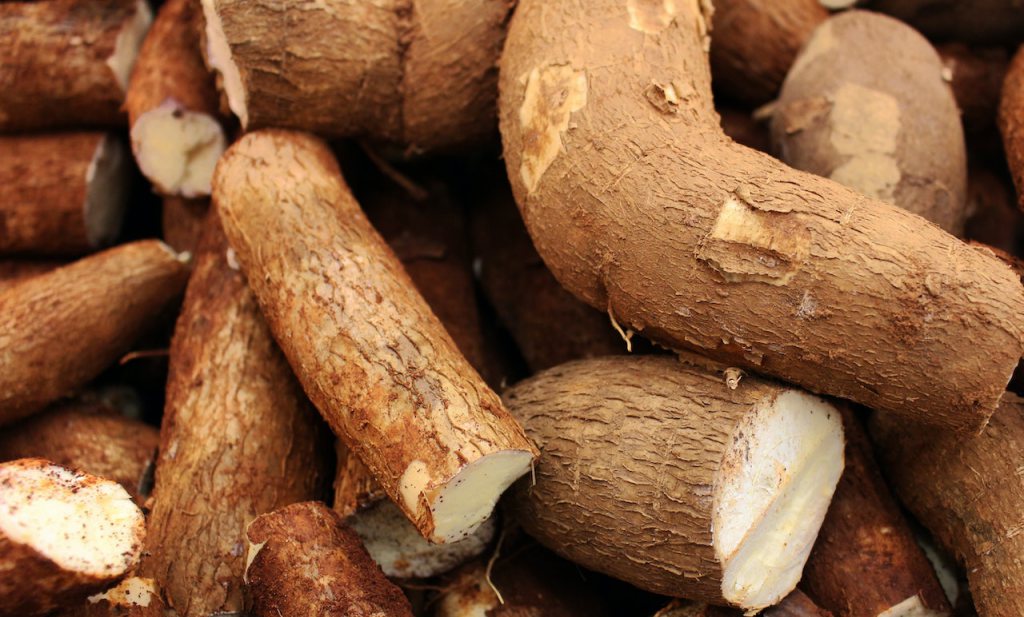Cassava, a plant native to South America (Brazil), is one of the main root and tuber crops grown in the world. It is extensively cultivated as a staple crop in tropical and subtropical regions of Africa and Asia for its edible starchy tuberous root, which serves as a major source of carbohydrates. Hence, it is regarded as one of the most important tropical root crops in Africa.
In 2018, the total annual production of cassava in Africa was 169 million tonnes. West Africa was the main production area with a total production of 93 million tonnes, which represents 55% of the production of cassava in Africa and 33.5% of the world production. With nearly 200 million tonnes of cassava produced annually, Africa's cassava production makes up the bulk (63%) of the global volume.
In 2022, the global cassava processing market size reached a volume of nearly 276.89 million tonnes, while growing at a cumulative annual growth rate (CAGR) of about 2.9% in the period 2018-2022. The market is expected to grow further in the period between 2023 and 2028 to reach a volume of approximately 328.71 million tonnes by 2028.
Cultivation
The strong expansion of cassava in the tropics, particularly in Africa, is due to the simplicity of its cultivation; its ability to grow on marginal lands that are difficult to use for other crops; its resistance to drought conditions, which, further justifies its extension in the Sahelian zones; and the possibility of leaving it in the ground and harvesting it progressively, thus allowing for extensive management of its food consumption.
According to the International Institute of Tropical Agriculture (IITA), 37% of Africa’s dietary energy comes from cassava. Per capita consumption on the continent is close to 100 kg of roots per year. As a result, cassava is regarded, in Central, Eastern and Western Africa, as a crop destined totally and exclusively to human food. However, in emerging economies and cassava producing countries, such as Brazil, Malaysia, Thailand, and South Africa, the development of cassava cultivation is supported by a process of upgrading the tuber in various food products (chips, flour, cooked pasta, garri, etc.) and non-food industrial systems (animal feed, starches, sugar derivatives, glues, etc.), with highly significant capital gains.
Up until now, the economic importance of cassava is limited by nutritional (high energy source but deficient in lipids and proteins) and toxicological constraints (most varieties contain cyanogenic compounds). Thus, most of the cassava is grown specifically to be eaten and the remainder is handled as starch, flour, pellets, chips, derived ethanol, etc. Processing of cassava eliminates the toxins, improves its resilience, decreases the weight, and increases their overall value, thus making processed cassava to be widely used in a range of industries, including milk, fertilizer, paper and carton, cloth, medicine, glues, and adhesives.
The cassava processing market is being driven significantly by the extended applications in the end-use industries. The increasing use in the food industry and a corresponding rising demand from the feed industry drive the demand for processed cassava further and stimulate the market growth.
Nutritionally enhanced
In a bid to further enhance the nutritional content of cassava, the International Institute of Tropical Agriculture developed pro-vitamin A cassava varieties which have since been commercialized and widely cultivated by farmers. In the same vein, the research and development team of Bamad Agro-Allied Company Limited has patented a solution that eliminates the cyanide content of cassava, thus reducing processing time and increasing utilization locally. Eventually, this will promote food security while enhancing value chain development for export promotion to drive foreign exchange earnings.
To fully harness the potential of cassava in the wake of its extensive use for food (through bio-fortification and removal of cyanide content) and non-food industrial systems (bio-energy and bio-economy), African countries must increase their investment in research and development, in MSMEs in the cassava value chain, in extension services and in export promotion.
In 2022, the global cassava processing market size reached a volume of nearly 276.89 million tonnes, while growing at a cumulative annual growth rate (CAGR) of about 2.9% in the period 2018-2022. The market is expected to grow further in the period between 2023 and 2028 to reach a volume of approximately 328.71 million tonnes by 2028.
Cultivation
The strong expansion of cassava in the tropics, particularly in Africa, is due to the simplicity of its cultivation; its ability to grow on marginal lands that are difficult to use for other crops; its resistance to drought conditions, which, further justifies its extension in the Sahelian zones; and the possibility of leaving it in the ground and harvesting it progressively, thus allowing for extensive management of its food consumption.
According to the International Institute of Tropical Agriculture (IITA), 37% of Africa’s dietary energy comes from cassava. Per capita consumption on the continent is close to 100 kg of roots per year. As a result, cassava is regarded, in Central, Eastern and Western Africa, as a crop destined totally and exclusively to human food. However, in emerging economies and cassava producing countries, such as Brazil, Malaysia, Thailand, and South Africa, the development of cassava cultivation is supported by a process of upgrading the tuber in various food products (chips, flour, cooked pasta, garri, etc.) and non-food industrial systems (animal feed, starches, sugar derivatives, glues, etc.), with highly significant capital gains.
The cassava processing market is being driven significantly by the extended applications in the end-use industries. The increasing use in the food industry and a corresponding rising demand from the feed industry drive the demand for processed cassava further and stimulate the market growthLimitations
Up until now, the economic importance of cassava is limited by nutritional (high energy source but deficient in lipids and proteins) and toxicological constraints (most varieties contain cyanogenic compounds). Thus, most of the cassava is grown specifically to be eaten and the remainder is handled as starch, flour, pellets, chips, derived ethanol, etc. Processing of cassava eliminates the toxins, improves its resilience, decreases the weight, and increases their overall value, thus making processed cassava to be widely used in a range of industries, including milk, fertilizer, paper and carton, cloth, medicine, glues, and adhesives.
The cassava processing market is being driven significantly by the extended applications in the end-use industries. The increasing use in the food industry and a corresponding rising demand from the feed industry drive the demand for processed cassava further and stimulate the market growth.
Nutritionally enhanced
In a bid to further enhance the nutritional content of cassava, the International Institute of Tropical Agriculture developed pro-vitamin A cassava varieties which have since been commercialized and widely cultivated by farmers. In the same vein, the research and development team of Bamad Agro-Allied Company Limited has patented a solution that eliminates the cyanide content of cassava, thus reducing processing time and increasing utilization locally. Eventually, this will promote food security while enhancing value chain development for export promotion to drive foreign exchange earnings.
To fully harness the potential of cassava in the wake of its extensive use for food (through bio-fortification and removal of cyanide content) and non-food industrial systems (bio-energy and bio-economy), African countries must increase their investment in research and development, in MSMEs in the cassava value chain, in extension services and in export promotion.
Related



